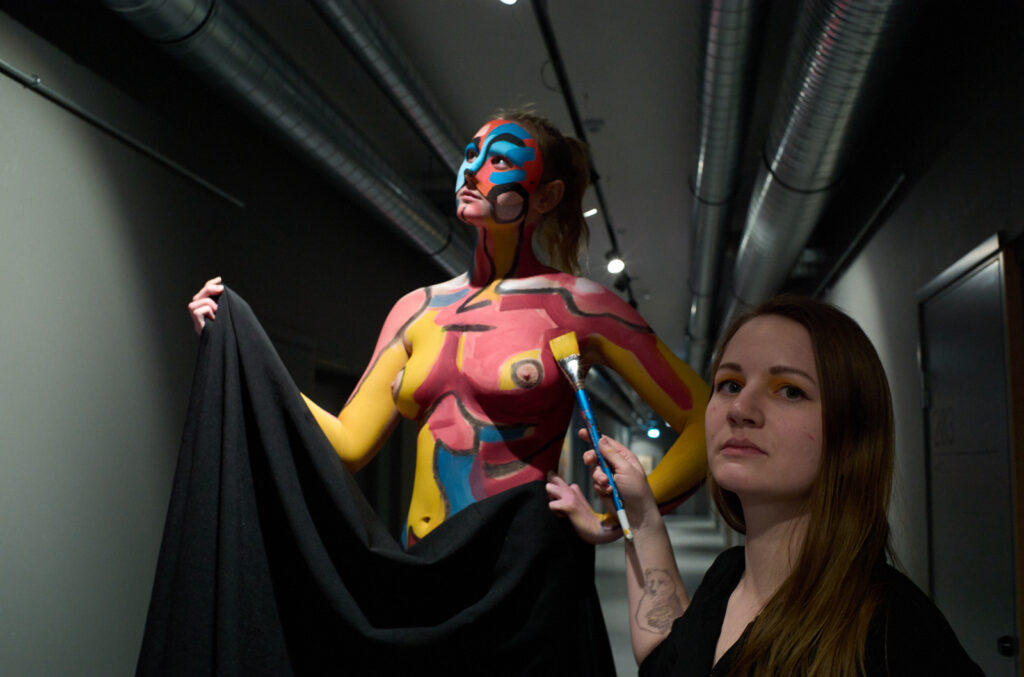Estonian World spoke to Tartu-based artist Helen Bunder during her solo exhibition “Echo of Being” at Tallinn’s Solaris Art Gallery, to find out more about her life and art.
Helen Bunder graduated from Tartu Art School in 2011 with a degree in design graphics and in 2014 from the University of Tartu with a degree in painting. In 2016, she completed her master’s studies at the University of Tartu as a teacher of arts and crafts. She has been a member of the Tartu Artists’ Union since 2021.
Helen, you create paintings and drawings. What would you say your art is about?
My art is mostly about life itself. Painting helps me analyse different aspects of being an artist, a woman, a mother, a friend, a partner and overall, just a person.

Are your paintings your search for meaning? Is that you and the world around you?
Yes and no. I mostly don’t start my work with a question or an idea in mind. The thoughts and meaning come to me during the painting process itself. So, in a way I’m not searching for it, it reveals itself to me. I’m just letting meanings find their way into my work.
What experience and thoughts do you hope visitors will take away from viewing your works?
I hope viewers recognise their own experiences in my work. And I also hope they find new ideas and meaning later. My favourite feedback is when people listen to the stories behind my paintings and then tell me “Yes! I know this feeling!”
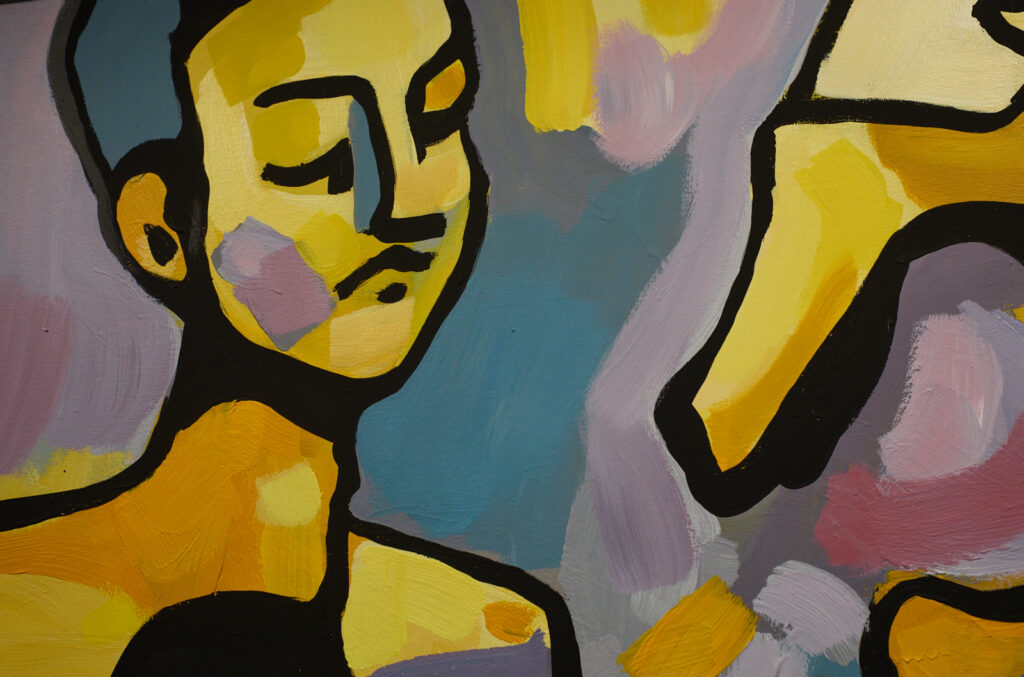
Could you go over your design process?
I start by preparing the surface where I paint – usually veneer or other hard material. I pick my tones mostly by intuition or mood. Sometimes I feel like being very colourful, sometimes monochromatic. I mix and paint colours all over the surface, trying to catch a sort of balance.
I then bring out figures, objects and forms I see popping out to me in the painted spots. I sometimes see them already during the first phase. I use black paint to draw out the figures and by this stage I usually already have an idea or theme in my mind. Then I continue bringing out the figures more by adding or removing where I find necessary. I don’t do drafts before; the process evolves directly on the picture.
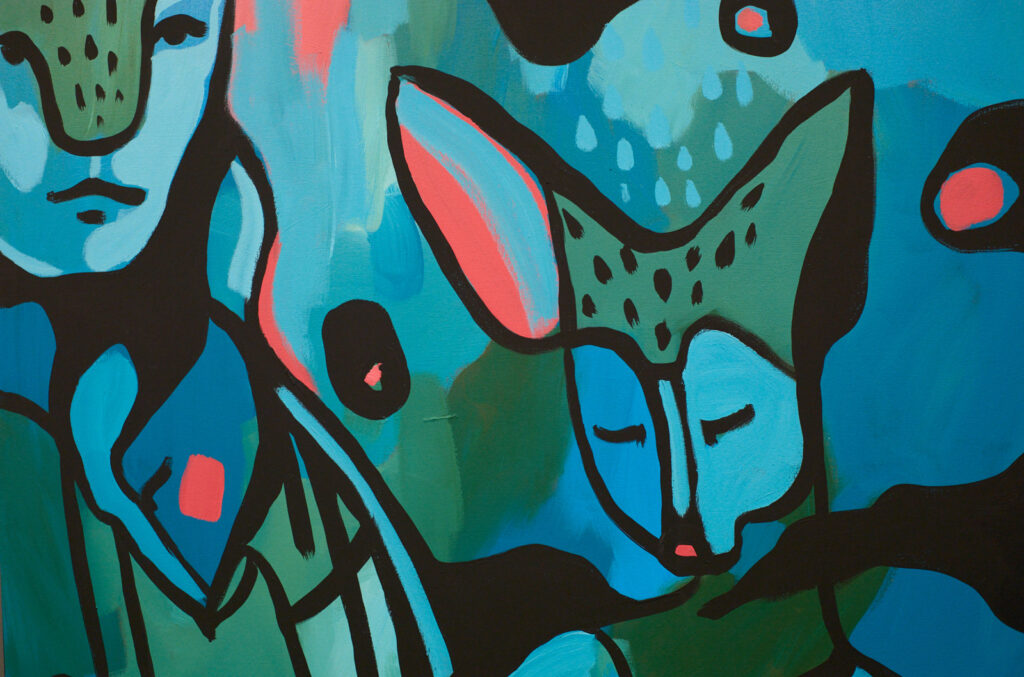
How do you see yourself evolving as an artist? Would you say each painting was a search for who you are as an artist?
Searching who I am as an artist and as a person was a struggle when I was a bit younger. I guess everyone has these phases but for me it was hard to find how and what to paint or draw. I felt that everything had already been made – I questioned who I was doing this for and who even cared.
I was afraid of what other people, other artists thought of my work, and I feared failure. I thought I needed to have big deep meanings to my work before I started them. In the past, I had experimented with the style I have developed now, but never dared to follow it up without fear. Attending a therapy and healing my depression really gave me the courage to do what I love, with love.
I have understood that being an artist does not have to be a struggle. I can just paint how and when I like. If I fail or if things don’t work out, it is fine; I will fix it later or even paint over the whole picture. I don’t need to race against anything or anyone. I just do what I love and if other people like what they see, it is a bonus.
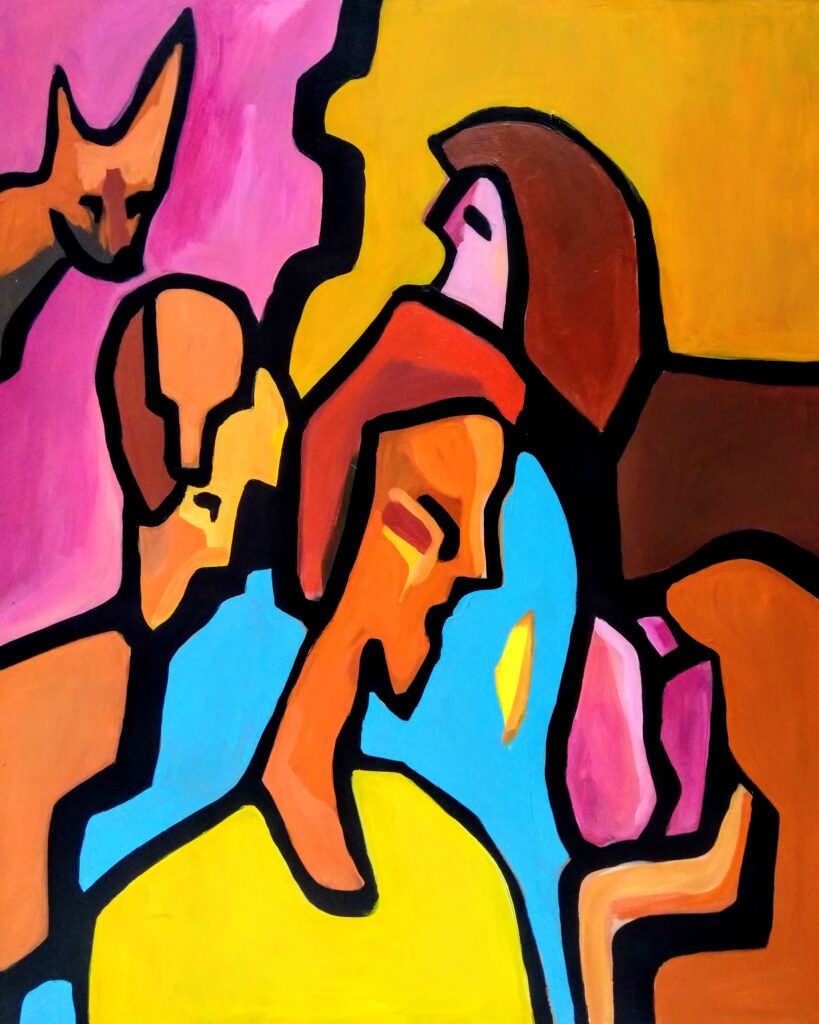
Can an art exhibition itself be considered a form of art separately from the individual works on show?
I believe that yes, curating an exhibition is a form of art and collaboration between the gallery and the artists and the environment and context the exhibition is in. The curator must consider sizes, colours, lighting and relationships between works of art. I think I would like to try and curate an exhibition in the future – maybe together with someone else in a partnership at first.
How can we bring art from galleries and museums more into public spaces – and how to engage viewers more with the paintings? Is that perhaps something you were doing by sharing the stories behind your paintings with visitors and painting live at the Solaris gallery?
Well, I think visiting art exhibitions and going to see art needs to start from childhood. I think enjoying and discussing art should start in kindergartens, schools, and families. If visiting exhibitions became as popular as going to the cinema or theatre, bringing it closer to people would not even be an issue or a question.
I guess different public events and workshops at exhibitions help. Sharing stories and painting live is a new thing for me and I really enjoy it. It gives me the opportunity to connect with the viewers on another level and people always broaden and reflect on my own ideas.
I believe that sharing the art experience gives it more meaning and yes, giving people the opportunity to hear the stories behind artworks helps to connect with art more easily. I guess the problem with people not visiting exhibitions as much is something to do with the prejudice of art being something difficult to understand.
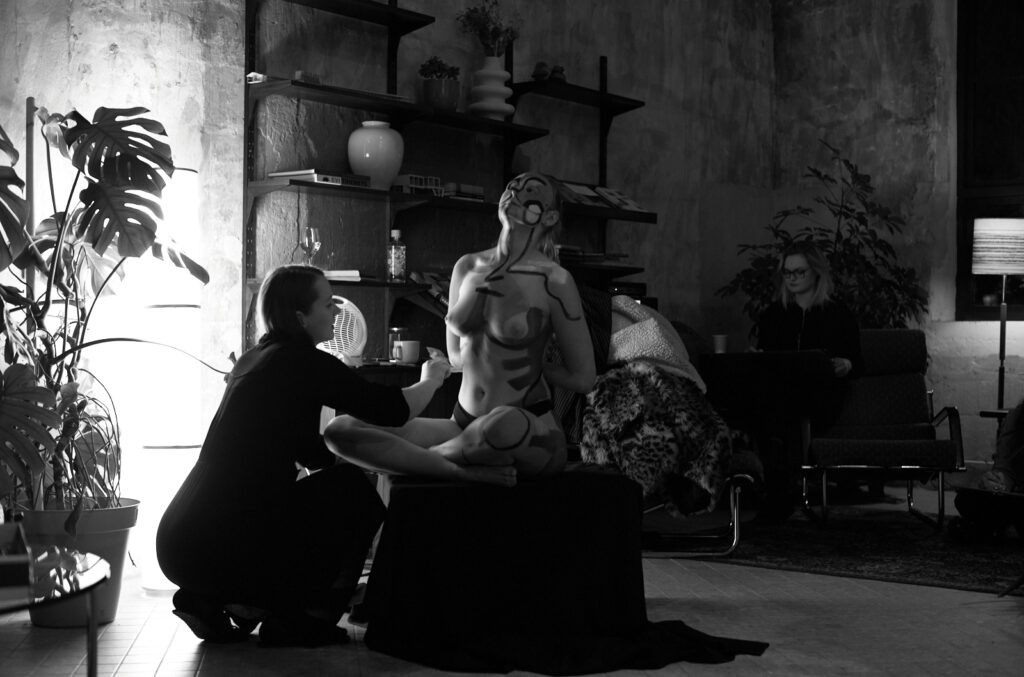
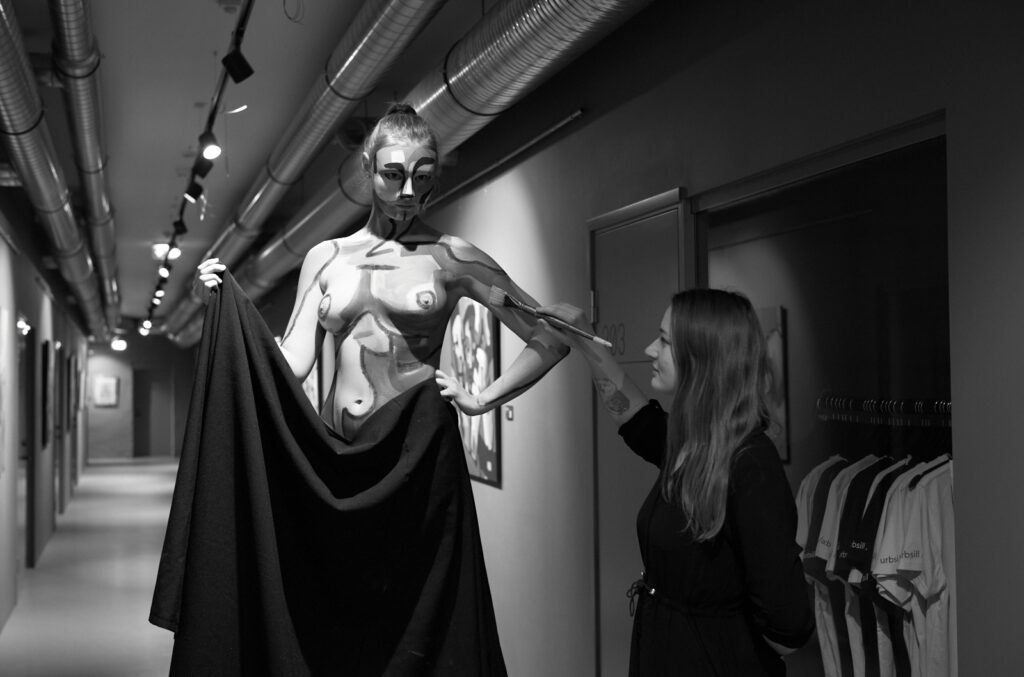
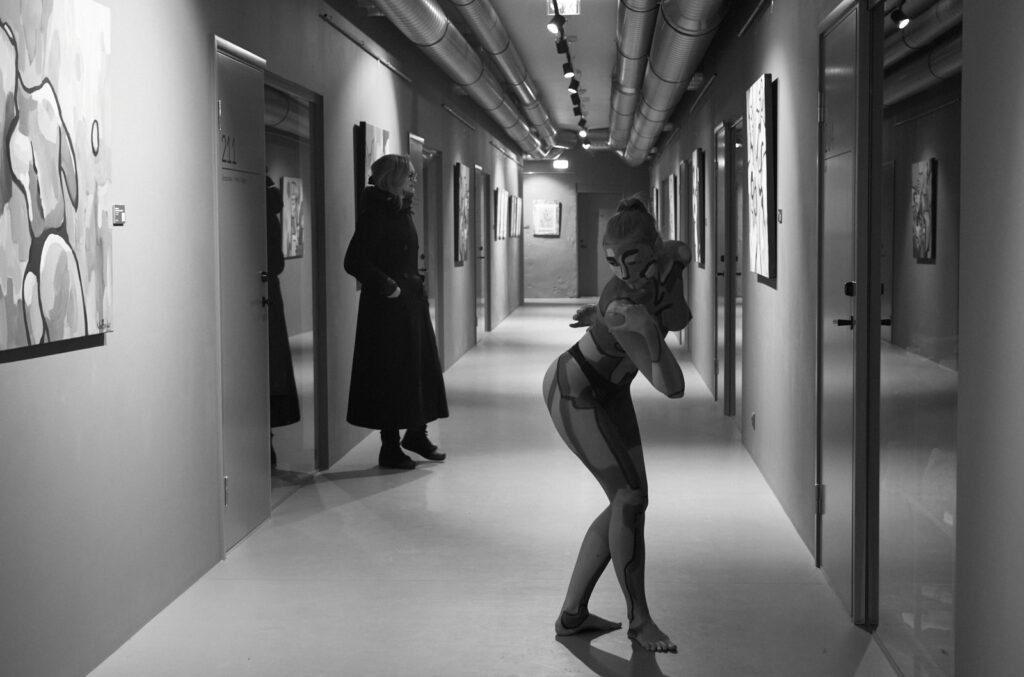
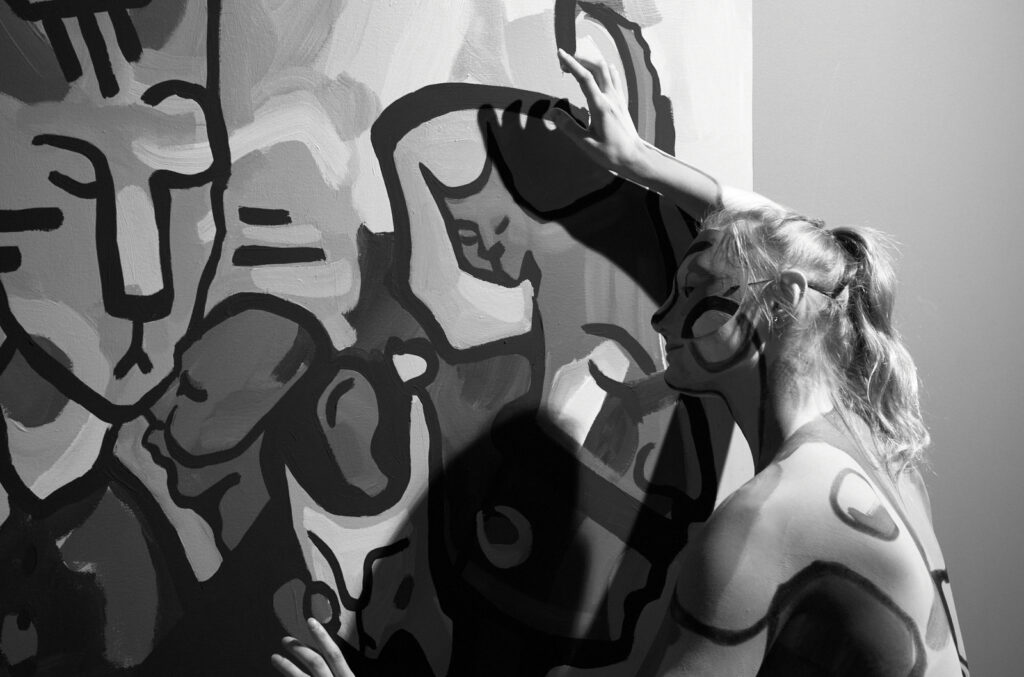
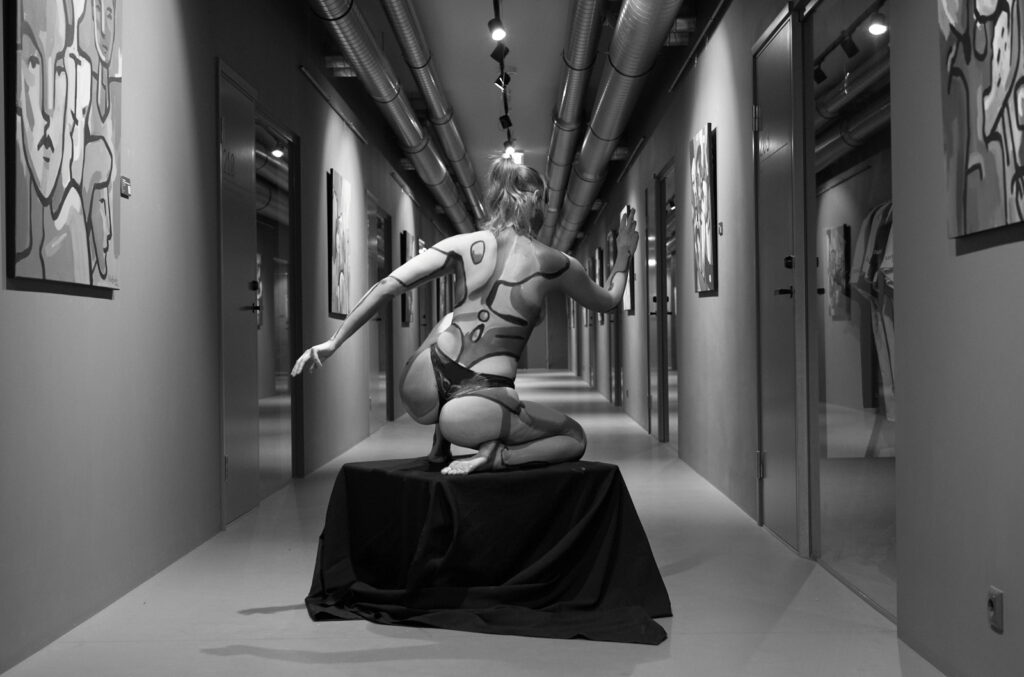
Do audiences matter to you?
It doesn’t matter what kind of audience is looking at my work but I am interested in the people that my work connects with. Audience matters to me in such a way that whoever sees it, maybe gets a reflection within themselves and I would love to hear or understand it.
Have you made any self-portraits?
All of my works are self-portraits in a way, since I kind of “talk” about my life, feelings, happenings, ideas, thoughts in my paintings. That is how I portray myself. But I have made “normal” self-portraits in the past, yes. I have drawn and painted myself from the mirror several times.
Was there someone or something that inspired you initially?
I am inspired by people and the world around me constantly. I am inspired by conversations, movies, books, nature, parties, silence, other artists, colleagues and my family. The list is endless. I think everything can be inspiring if you have enough curiosity.
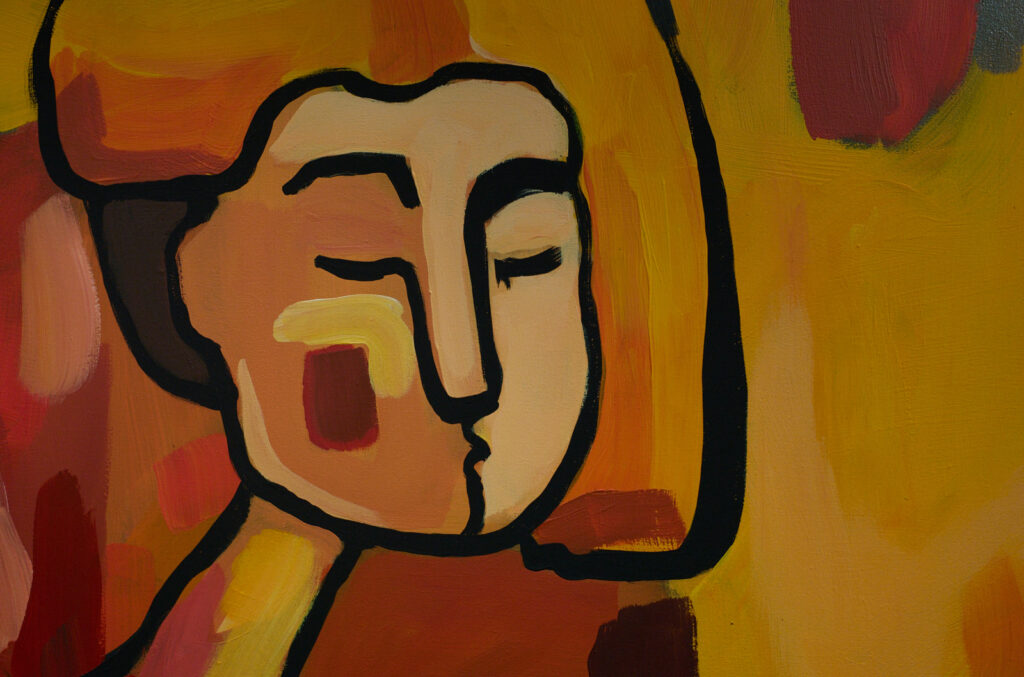
There are stories in every one of our paintings, mostly about human coexistence, about the journey through life and the people we meet on the way, people who stay and about separation and love. Could you share the stories behind a few of your paintings?
For example, “Line of Women” has many different themes. It is about being and feeling feminine. I had to have a piece of my uterus removed. It made me wonder how much our physical bodies define how feminine we are and feel. It was a scary process for me.
It is also about the female family line. How it is impossible to inherit all the important teachings of our mothers and grandmothers, since the relationships are always about being a daughter or a granddaughter. Some things are not discussed and there is a kind of wall of silence, maybe even respect or fear of something happening to the relationship if you open up too much. That is how I feel. I painted this at a time when I realised that grandmothers are not here forever.
Also, the painting is about the huge amount of very mixed information about being a woman, a mother, a partner – a lot of books, information, movies, blog posts, social media feeds, comments about how to “live right”. I have felt the weight of not being able to navigate through this information overload and with this painting, I realised that in the end, it is your own heart that must be heard. So, a lot of stuff is going on in this one.
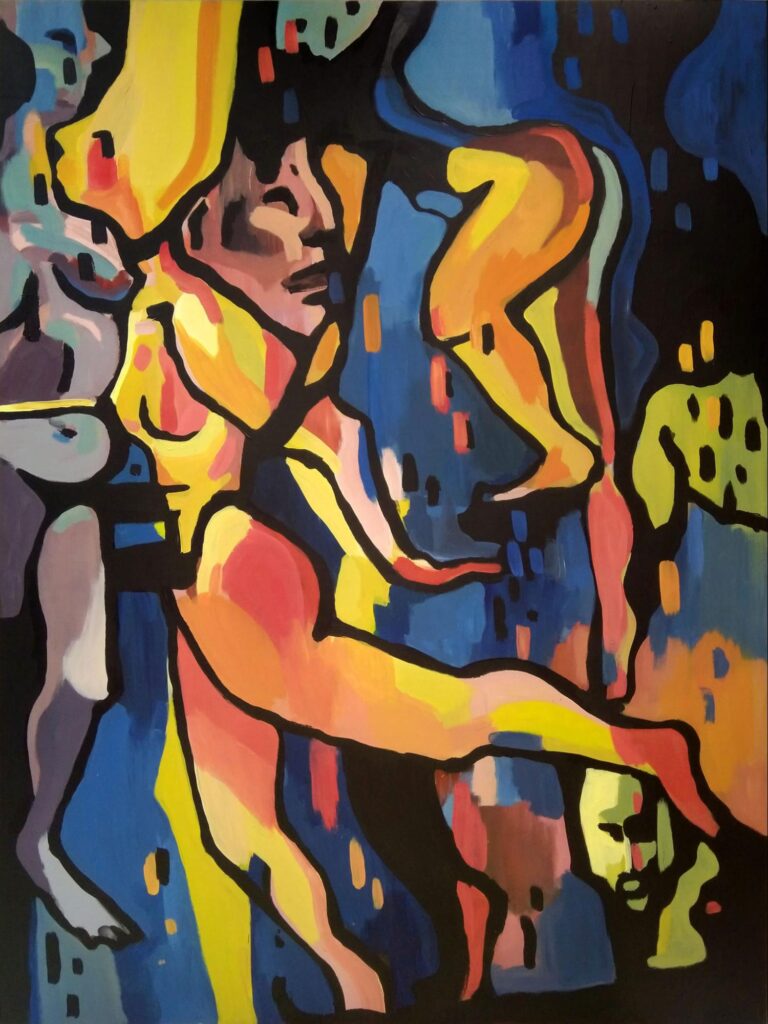
“Magic” is about all the weird but magical moments, when you know that “this has happened before” – the dreams that repeat. The feelings inside that tell you the right things – the gut feelings that turn out to be true. This is about the different layers of being in the moment and time.
This is about all the indescribable things that make our life a bit more interesting and magical. I think that even if it is possible, it is not necessary to know and understand everything rationally. Let there be some things to just feel.
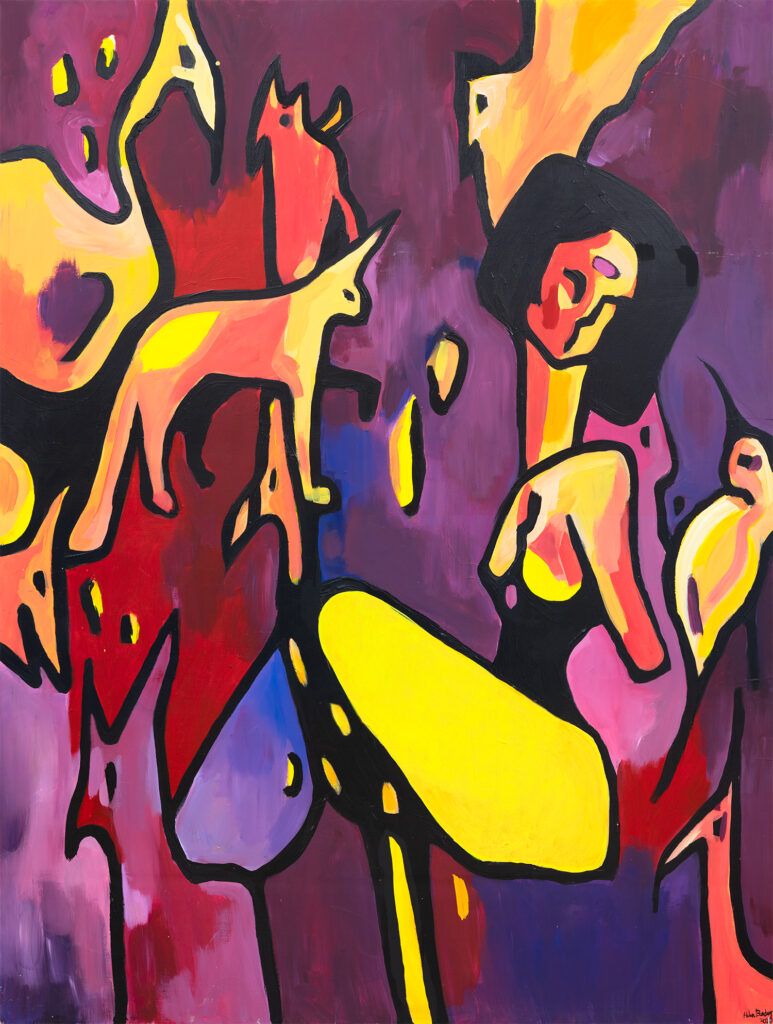
As the paintings reflect on your life and people around you, how does it feel when they are sold and go to their new homes, to the new owners?
I think the moment I let go of my painting, it is not mine anymore. It belongs to the public and to the new owners. The paintings have to manage on their own, without me. I usually forget about my work, if I don’t see it anymore.
How would you describe the creative scene in Tartu and how does it impact your own work?
Tartu has many great art schools and therefore a lot of artists and creative spirits. We have Children’s Art School, Tartu Art School and Pallas University of Applied Sciences. Also, the street art scene is very versatile and interesting.
I’m working as a teacher at Tartu Art School and I’m a member of an underground artists’ movement that comes together once a month to share the good and ugly about being an artist. I am very inspired by other artists, my colleagues and my students. I am constantly surrounded by art, exhibitions and discussions. It impacts me mostly by giving me the urge to do art, to be a part of this awesome collective of artists we have in Tartu.
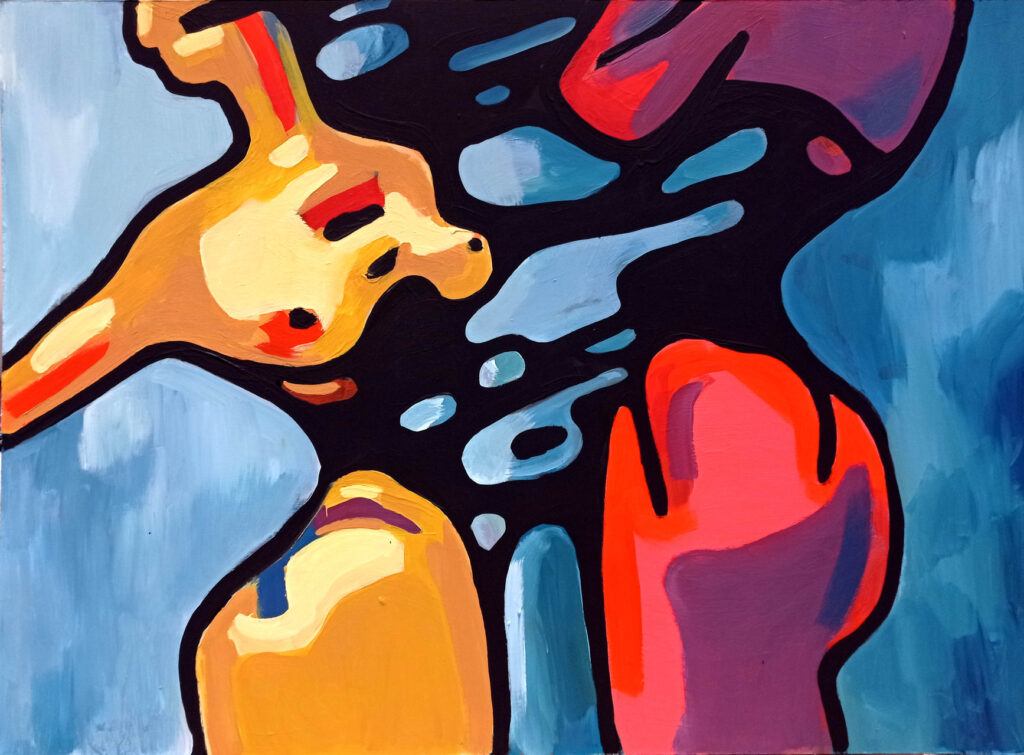
What do you enjoy most about teaching?
Teaching gives me the opportunity to stay fresh, to keep my mind open and discover new ideas in connection with the students and my colleagues. I enjoy seeing how students develop and have their eureka moments when working on a problem or task that seems tough at first.
Some of Helen Bunder’s paintings are currently on display at the newly opened SAH exhibition about the history of street art, located upstairs at the Solaris Centre (access via Apollo bookstore) in Tallinn. Other artists in the exhibition include Jaan Elken, Edward von Lõngus, Okeiko, Liisa Kruusmägi, Tarrvi Laamann, Arne Maasik, Kaupo Kikkas, Evi Tihemets and Robin Nõgisto. The exhibition is curated by Meelis Tammemägi and accompanied by a soundscape created by Estonian musician and composer Rael Kõiv and Bananafish (UK). Helen Bunder’s works are until 10 June also displayed on the first floor of the Forgery Gallery of the Põhjala Factory in Kopli, Tallinn.

